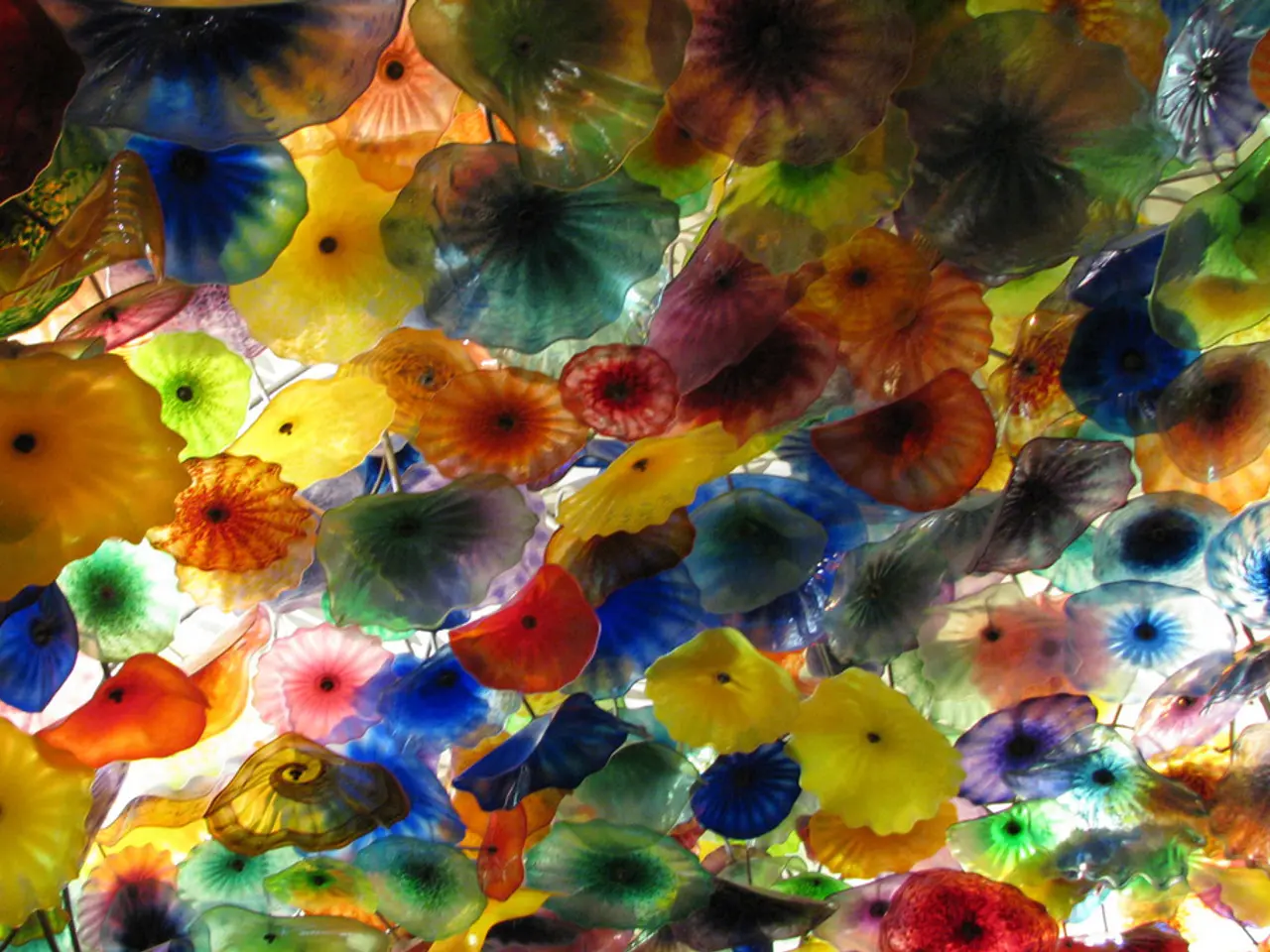Refreshing Your Color Theory Fundamentals: a handy guide to jog your memory!
================================================================
In the realm of interactive design, the strategic use of color plays a pivotal role in creating visually appealing and functional interfaces. To achieve this, designers often turn to the principles of color theory and the color wheel, a tool developed by Sir Isaac Newton in 1666.
The color wheel, a circular arrangement of hues, shows the links between different colors based on their red, yellow, and blue content. Primary colors – yellow, red, and blue – are the basic colors that cannot be broken down into any simpler colors. Secondary colors, such as orange, green, and purple, are created by mixing two primary colors. Intermediate or tertiary colors are formed by mixing primary and secondary colors to create a hybrid.
Understanding the color wheel and the relationship between colors helps designers choose colors for their designs. The color wheel approach suggests that warm colors, like yellow, orange, and red, convey feelings of passion, power, happiness, and energy, while cool colors, such as green, blue, and purple, reflect calmness, meditation, and soothing impressions.
There are five main color schemes that allow designers to achieve harmony in their designs: monochromatic, analogous, complementary, split-complementary, and triadic. The monochromatic scheme is based on the colors created from different tints, tones, and shades of one hue. The triadic scheme uses three colors at equal distances from each other on the color wheel, offering a balanced yet colorful scheme. The analogous scheme uses colors next to each other on the wheel, creating a coherent and calm palette. The split-complementary scheme uses one base color and the two colors adjacent to its complementary color.
The complementary scheme uses one (or more) pairs of colors that "cancel each other out" when combined, producing white or black (or something similar from the grey-scale). This scheme is useful for calls to action or highlighting. On the other hand, the tetradic color scheme utilizes two sets of complementary pairs: four colors. The square color scheme is a variant of the tetradic scheme, with four colors that are evenly spaced at 90° from each other.
When choosing color schemes, it's essential to be aware of cultural connotations of colors. For instance, red is often associated with passion and love in Western cultures, but in some Eastern cultures, it symbolizes bad luck or danger.
To create visually harmonious and functional interfaces, it's recommended to start with a base color relevant to your brand or content. Use the color wheel to select a harmony type and generate color ranges. Adjust lightness and saturation to suit your design context and ensure accessibility. Test combinations for readability, visual hierarchy, and user psychology impacts, considering the culture, age, and gender of your audience.
In conclusion, leveraging the color wheel to experiment with established harmonies, adjusting saturation and contrast to align with your goals, and considering psychological factors can help create visually appealing and functionally effective interactive designs. Tools that simulate these harmonies can speed up the process, ensuring that your designs remain engaging and user-friendly. User testing is also highly recommended, especially at the start of the design process.
- In the field of user research, understanding user preferences regarding color is crucial when selecting a color scheme for UI design.
- To delve deeper into the psychological impacts of color, designers may find useful insights in color theory, a discipline that studies the effects of colors on human emotions and perceptions.
- Artificial-intelligence, when combined with user research, can help predict user preferences and optimize the color choice for interaction design, creating an enhanced user experience.
- In the future, technology, particularly AI, may play a crucial role in automating the process of selecting color schemes, merging the domains of AI and graphic design for even more efficient interactive design solutions.




